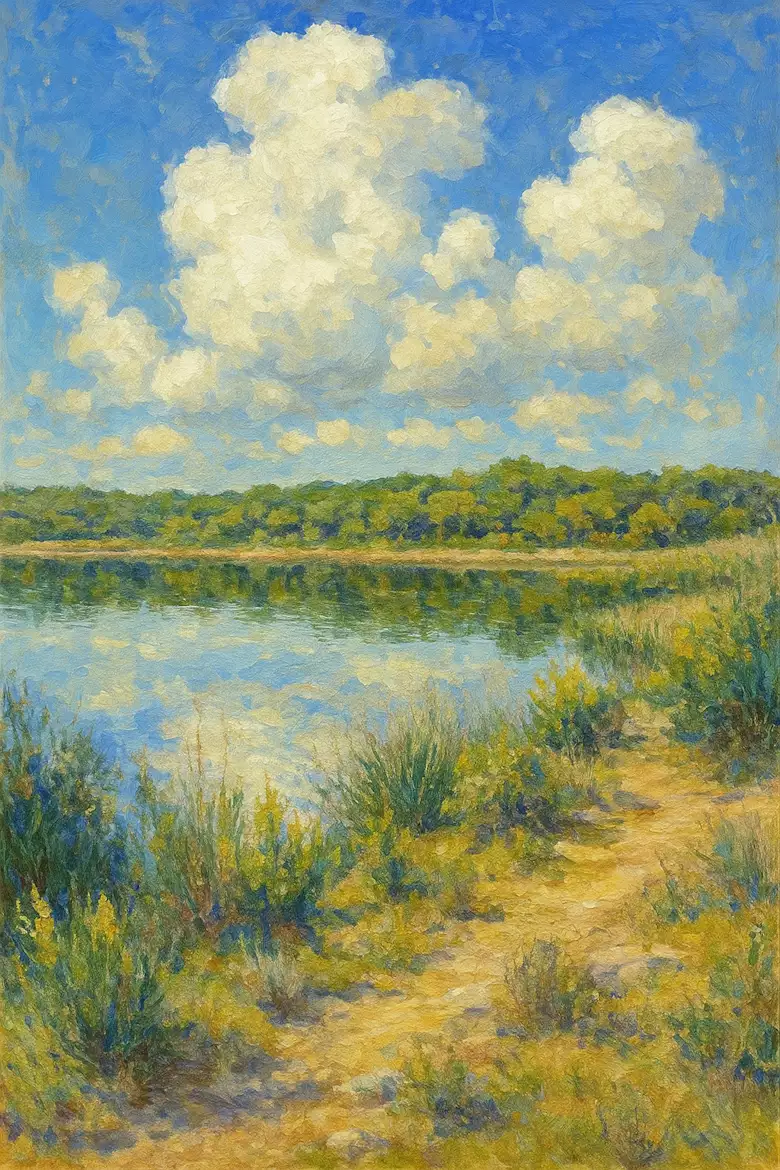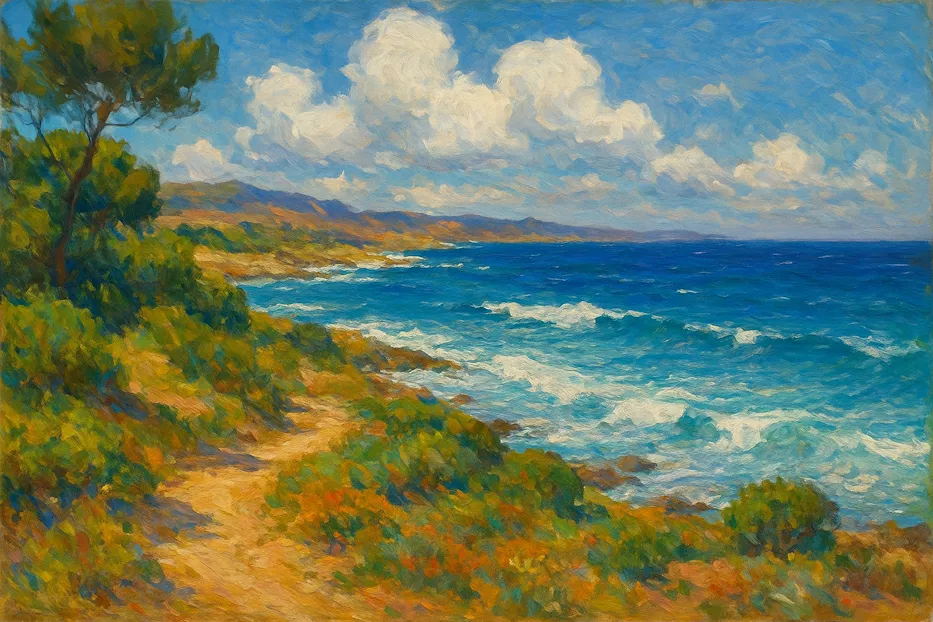Geographical facts about Sardinia offer a glimpse into one of the Mediterranean’s most intriguing and diverse islands.
Known for its wild beauty and strong cultural identity, Sardinia captivates visitors with landscapes that seem to belong to multiple worlds at once. Its geography has shaped not only the island’s natural environment but also the way its people live, farm, and build communities. Ancient rocks tell stories of Earth’s deep past, while its unique microclimates sustain rare ecosystems found nowhere else in Europe.
From coastal plains to highland forests, Sardinia’s terrain is a living museum of natural history and evolution. The contrasts between arid dunes, fertile valleys, and mountainous interiors make it a destination of endless discovery. Every corner of the island reveals how geography intertwines with culture, economy, and tradition. Whether you’re passionate about nature, geology, or travel, understanding Sardinia’s land and climate deepens appreciation for its timeless character.
In this guide, we’ll explore 10 fascinating geographical facts about Sardinia that show why this island remains one of Europe’s most remarkable natural treasures.
Table of Contents
Sardinia is the Second-Largest Island in the Mediterranean
Sardinia is the second-largest island in the Mediterranean Sea, after Sicily, covering an area of about 24,100 square kilometers. This size gives it an impressive variety of landscapes, from mountains to plains, coastal lagoons, and long beaches. The island lies roughly 200 kilometers west of mainland Italy and 12 kilometers south of Corsica. Sardinia’s vast surface area allows it to host distinct microregions, each with unique ecosystems and traditions. Its size also makes it larger than several European countries, such as Slovenia with its beautiful Bled Island, or the Grand Duchy of Luxembourg.
The geographical diversity supports both agricultural and pastoral lifestyles, with inland areas used for grazing and coastal regions focused on fishing and tourism. Because of its large landmass, traveling across Sardinia offers a constantly changing panorama of scenery and climate. The island’s size contributes to its relative isolation, fostering the preservation of native flora, fauna, and cultural traits. For visitors, Sardinia’s vastness means there’s always more to explore beyond the famous beaches. Its geographical prominence makes it one of Europe’s most fascinating and diverse islands to study and experience.
The Island’s Terrain Formed Over Millions of Years
Sardinia’s geological history spans hundreds of millions of years, making it one of the oldest landmasses in Europe. The island originated during the Paleozoic era when ancient tectonic movements shaped its base rocks. Over time, volcanic activity, erosion, and continental drift molded Sardinia into its current form. Much of the island consists of ancient granite, schist, and limestone formations, offering insight into Earth’s early geological processes. Unlike younger islands such as those of volcanic origin, Sardinia’s rugged terrain tells a story of time and transformation rather than eruption. Fossils found in the island’s rocks provide evidence of prehistoric marine environments.
The long geological timeline also means Sardinia has a rich variety of minerals and rock types. The landscape’s ancient origin contributes to the island’s scenic beauty, from weathered cliffs to smooth granite peaks. This deep history makes Sardinia a living textbook for geologists and nature enthusiasts. Understanding its ancient terrain helps explain the unique biodiversity and soil characteristics that shape life on the island today.
Sardinia Has No Active Volcanoes but Ancient Volcanic Origins
Sardinia has no active volcanoes today, making it one of the most geologically stable islands in the Mediterranean. However, its distant past tells a different story. Millions of years ago, during the Tertiary period, parts of the island experienced intense volcanic activity. Traces of this ancient activity can still be seen in areas like Monte Arci, Monte Ferru, and the Logudoro region, where old lava flows and basaltic rocks remain. These volcanic structures have been extinct for millions of years and pose no geological threat today.
The island’s current landscape is mostly granitic and metamorphic, formed by erosion and uplift rather than eruption. This ancient volcanic heritage enriches the soil in certain regions, supporting cork oak forests and vineyards. It also contributes to Sardinia’s fascinating geological diversity, with colors and textures varying widely across the island. Because no volcanoes have been active in modern times, Sardinia enjoys a reputation for geological calm and safety. Visitors can hike among ancient craters and lava fields that now host thriving Mediterranean vegetation.
The Highest Peaks Rise Over 1,800 Meters
Sardinia is often thought of as a flat island, but it is surprisingly mountainous in the interior. The highest peak, Punta La Marmora, reaches 1,834 meters and is located in the Gennargentu massif. This mountain range forms the backbone of the island and divides Sardinia’s eastern and western regions. The rugged interior creates dramatic landscapes with deep valleys and steep ridges. Because of its elevation, the Gennargentu area experiences cooler temperatures and even snow during winter. These highlands are sparsely populated, offering pristine natural environments and panoramic hiking routes.
The mountain regions are home to rare species such as the mouflon, a wild sheep native to Sardinia. Rivers and streams originate in these mountains, feeding reservoirs and supporting agriculture downstream. The terrain also influenced historical settlement patterns, with ancient villages built on high ground for protection. Sardinia’s mountain ranges remain one of its most striking and ecologically vital features.
The Coastline Extends for More Than 1,800 Kilometers
Sardinia boasts an extraordinary 1,849 kilometers of coastline, making it one of the longest in the Mediterranean. This extensive shore includes sandy beaches, steep cliffs, hidden coves, and rocky inlets. The coast varies dramatically from north to south, with white sands in the northeast’s Costa Smeralda and rugged cliffs in the southwest. The variety supports different ecosystems, from marine grass meadows to seabird nesting areas. Sardinia’s coastline also hosts numerous lagoons and salt flats that attract flamingos and migratory birds.
For centuries, the coast has been vital for fishing, trade, and defense. Many ancient watchtowers and fortresses still stand as reminders of its strategic maritime importance. Tourism today thrives along this coastline, driving much of the local economy. Despite development, many stretches remain wild and protected under regional conservation laws. The vast and diverse coastline is one of the island’s greatest geographical and economic assets.
Lago di Baratz (Lake Baratz) is the Only Natural Lake on the Island
Lago di Baratz, located near Alghero in the northwest, is the only natural lake in Sardinia. It formed when sand dunes blocked the outflow of a coastal stream, creating a freshwater basin. Although small (covering about 0.6 square kilometers) it holds significant ecological value. The lake and its surrounding forest form a protected area supporting migratory birds and amphibians. Unlike artificial reservoirs built for irrigation or drinking water, Lago di Baratz remains a natural habitat.

Its waters are fed by rainfall and underground springs rather than major rivers. The surrounding dunes and pinewoods add to its scenic charm, making it a quiet retreat for nature lovers. Scientists monitor the lake’s ecosystem closely to preserve its delicate balance. Its uniqueness emphasizes how rare natural freshwater systems are in Sardinia. Visiting Lago di Baratz offers a glimpse into a pristine and fragile side of the island’s geography.
Sardinia’s Rivers are Short, Steep, and Seasonal
Sardinia’s rivers are typically short, steep, and fast-flowing, reflecting the island’s mountainous terrain. Most originate in the central highlands and flow quickly toward the sea. Because of the Mediterranean climate, many rivers have variable water levels depending on the season. During winter, rainfall fills riverbeds, while in summer they often dry up or shrink into small streams. The longest river, the Tirso, stretches about 152 kilometers and flows into the Gulf of Oristano.
Others, like the Flumendosa and Coghinas, are crucial for irrigation and hydropower. Dams built along these rivers create reservoirs that support agriculture and supply drinking water. Despite their short length, Sardinia’s rivers shape the island’s valleys and plains through erosion and sediment transport. Their seasonal nature has influenced local agriculture and settlement patterns for centuries. The rivers are small in scale but large in importance for Sardinia’s ecosystems and communities.
The Island Hosts Europe’s Largest Coastal Dune Systems
Sardinia is home to some of Europe’s most extensive coastal dune systems, often described as “mini-deserts.” These spectacular formations are found in the Piscinas and Scivu areas of the island’s Costa Verde. The dunes reach heights of up to 60 meters and stretch several kilometers inland, sculpted continuously by sea winds and erosion. Although they resemble deserts, the local climate is not arid enough to classify them as true deserts in scientific terms. Instead, they are dynamic dune ecosystems rich in specialized vegetation such as sea daffodils, juniper, and wild olive. These areas are protected for their ecological importance and stunning natural beauty.
The dunes create an otherworldly landscape where golden sands meet the deep blue Mediterranean Sea. Historically, the region was also part of Sardinia’s mining belt, leaving behind remnants of 19th-century industrial settlements now reclaimed by nature. Today, Piscinas and Scivu attract eco-tourists seeking unique, untouched environments. Sardinia’s coastal dunes stand as a remarkable example of how wind, sea, and time shape the island’s geography.
The Climate Combines Mediterranean and Mountain Influences
Sardinia enjoys a Mediterranean climate along the coasts, with mild winters and hot, dry summers. Inland and higher-altitude areas, however, experience cooler temperatures and more rainfall. This mix of coastal and mountain climates produces diverse ecosystems and agricultural products. Average summer temperatures along the coast can exceed 30°C, while mountain areas may remain below 25°C. In winter, snow occasionally covers the highest peaks of the Gennargentu range.
The island’s position in the western Mediterranean exposes it to both sea breezes and continental winds. These climatic contrasts influence everything from vegetation to traditional architecture. Olive groves, vineyards, and cork forests thrive in the varied conditions. Sardinia’s climate also attracts tourists year-round, from summer beachgoers to autumn hikers. The combination of Mediterranean warmth and mountain freshness is part of what makes Sardinia’s environment so balanced and appealing.
Geography Strongly Influences Sardinia’s Settlements and Culture
Sardinia’s geography has deeply shaped its human history, economy, and cultural identity. Mountainous terrain led to isolated inland villages that developed strong local traditions. Coastal areas, in contrast, became centers of trade and contact with other Mediterranean civilizations. The island’s rugged interior provided natural defense, preserving ancient languages and customs like the Sardinian dialects. Agriculture adapted to the geography, with vineyards and olive groves on the hills and pastures in the plains. Fishing communities along the coast developed unique culinary traditions centered on seafood.
Geography also dictated where roads, cities, and ports were built, shaping modern infrastructure. The contrast between coast and interior still influences social and economic life today. Many of Sardinia’s cultural festivals celebrate this connection between land and people. Understanding the island’s geography is essential to understanding Sardinia itself — its resilience, diversity, and timeless beauty.

